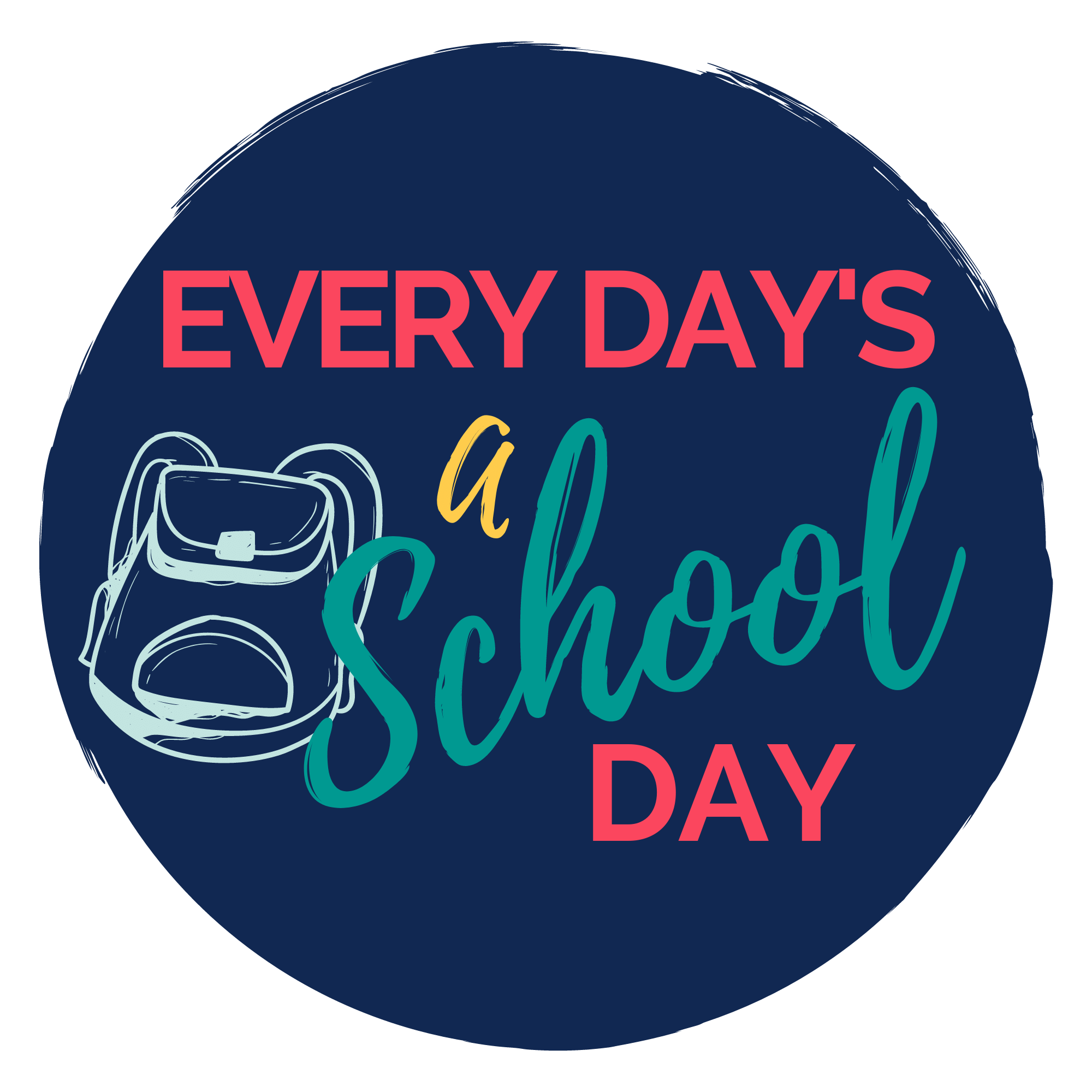Place Value is a vital part of maths learning for children. It can also include the prase ‘partitioning’ which I will explain briefly too.
Simply: Place value is the value of a digit (single number) depending on it’s place or position in a number. This involves children understanding ones, tens, hundreds and larger numbers.
Children start to learn basic place value for teen numbers from Reception but they might not call it place value For example in the number 13, there are 3 ones and 1 ten. Knowing that the 1 is a ten is place value understanding. They will start to learn it more formally in Year 1 with larger numbers. Place Value learning also includes decimals which children start to learn in Year 4 of Primary School.
Here’s a number with hundreds, tens and ones.
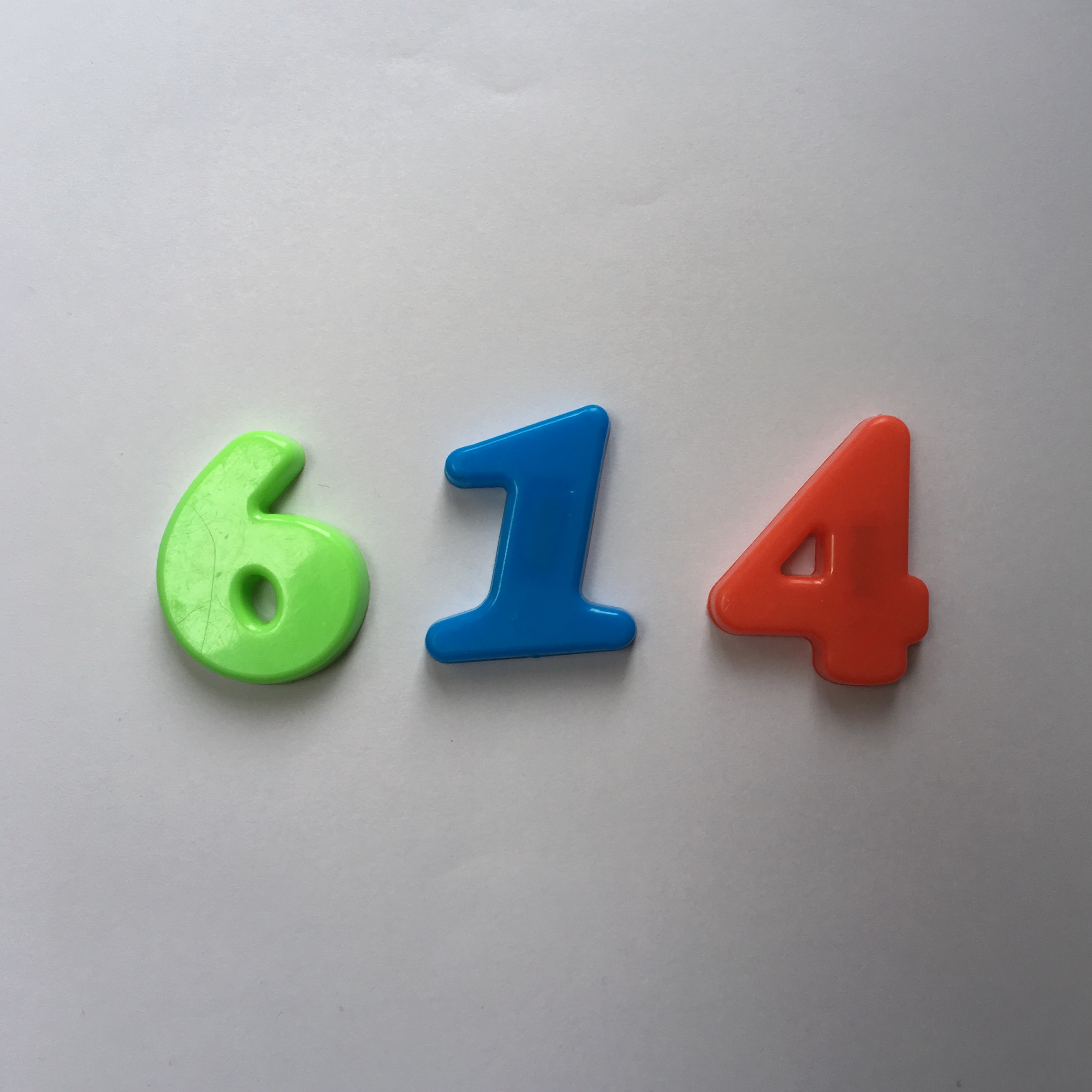
Children will learn that in the number above 4 is ‘4 ones’ (you might know this as units but we now call it ones so it doesn’t get confused with units of measurement such as cm, ml etc.) The 1 is ‘1 ten’ and the 6 is 6 hundreds. This understanding about the value of each number depending on it’s position is a valuable part of understanding how numbers work together and will be used so much when children start calculating.
In school your child will have lots of different methods that help them to see the place value in numbers. There are grids, pictures, cards, models and concrete resources (this means things you can touch and hold, like toys really. Don’t ask me why it’s called concrete resources, none are made from concrete, another bit of jargon nonsense just to confuse you!)
Here is a place value grid which shows a table with the different values at the top. Numbers could be written in each box so children can see what each one is worth. This one has decimals, grids for children in year 1 might just have tens and ones, grids in year 2 would have hundreds too. Decimals wouldn’t come in until year 4.
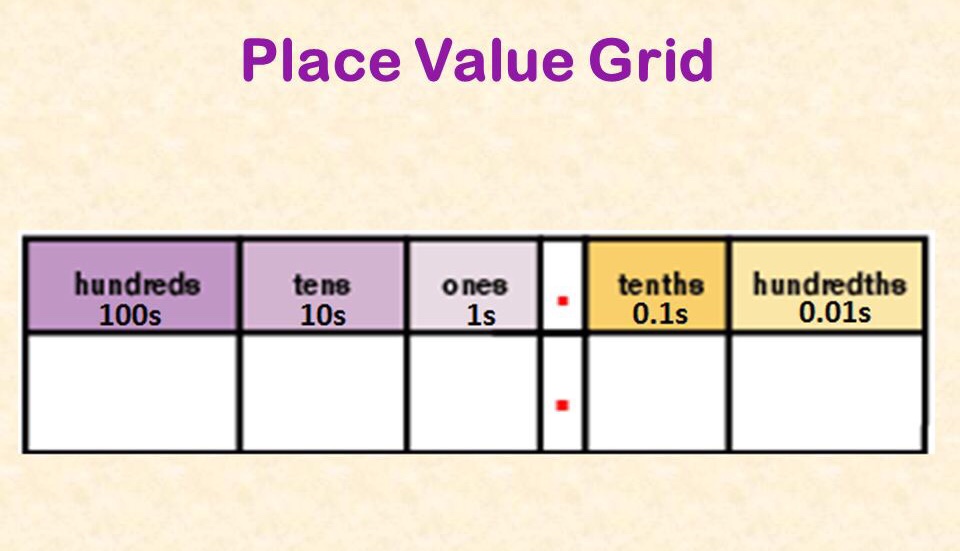
Place value cards or arrow cards are really useful to help children to see the value of each number. They are simply cards with the ones, tens and hundreds on (you can get larger ones and decimals too!) and they fit together with a point or arrow at one side.
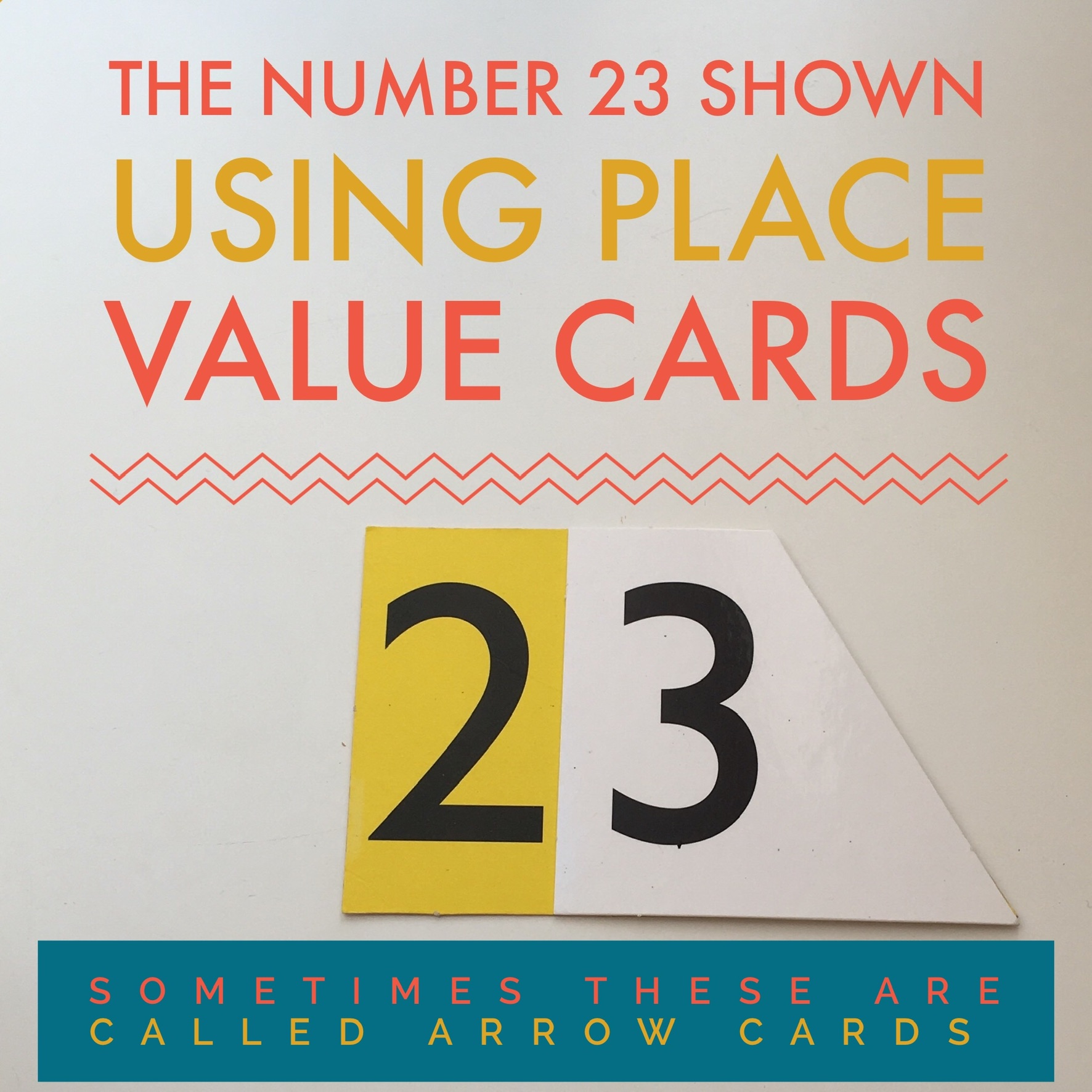
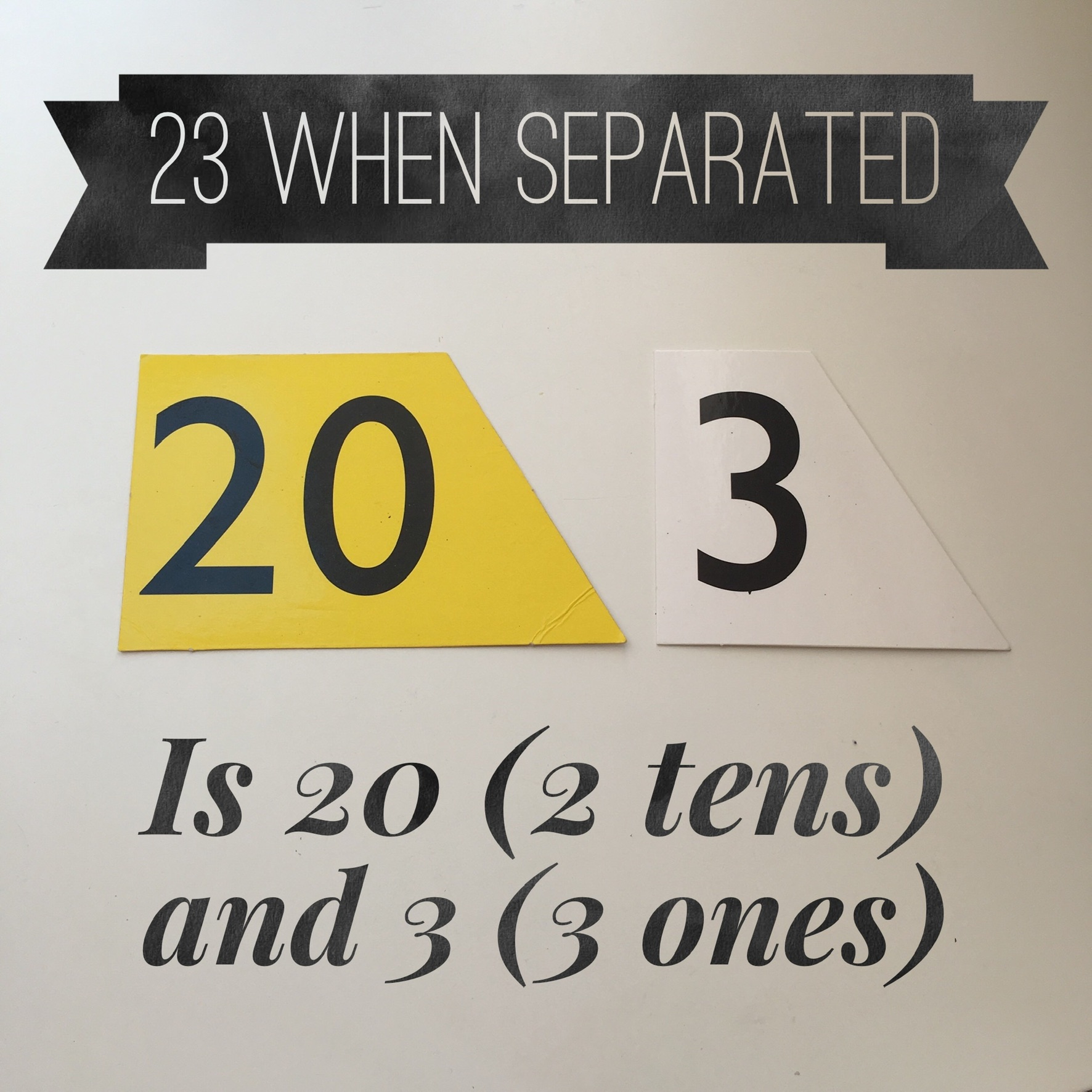
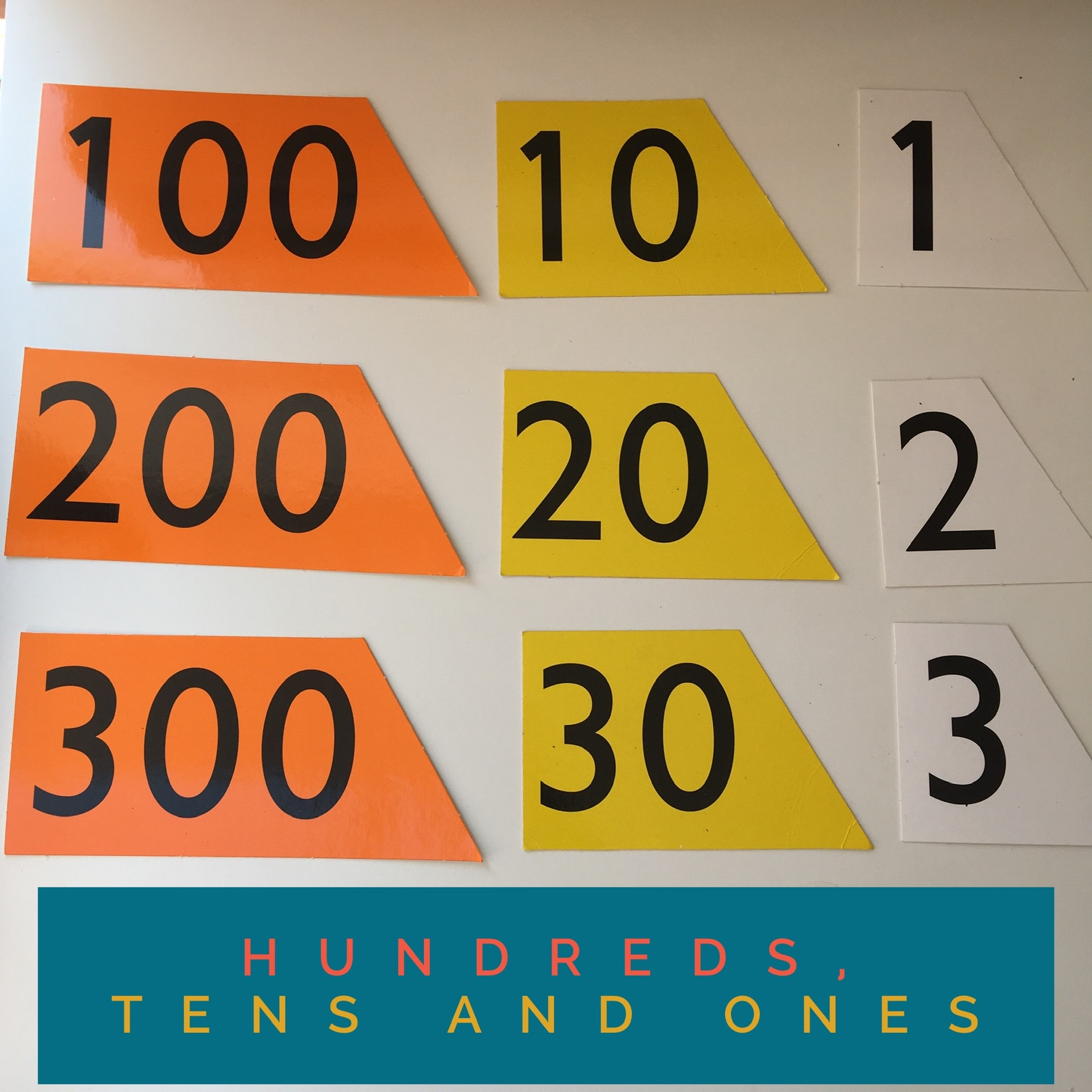
Here’s a little video showing place value cards in action:
This is a good point to quickly mention ‘Partitioning.’ It’s probably enough for a blog post by itself but useful to know that simply: partitioning means separating numbers out into smaller parts. So, in the video above, the arrow cards help us to separate 245 into 200, 40 and 5 or 2 hundreds, 4 tens and 5 ones. Partitioning is used to help children when they are calculating. It’s easier to separate numbers to make them smaller first than add them as large ones.
Here is an example of a resource that children might use in school to help with place value. It’s called Big Ten, there are similar things called Base Ten and Dienes. They show the ones as single cubes, the tens as long blocks with ten cubes and hundreds as large cuboids with 100 cubes joined together. They help children to visualise the numbers and get used to counting in ones, tens and hundreds. Can you work out what each number is in the pictures below?
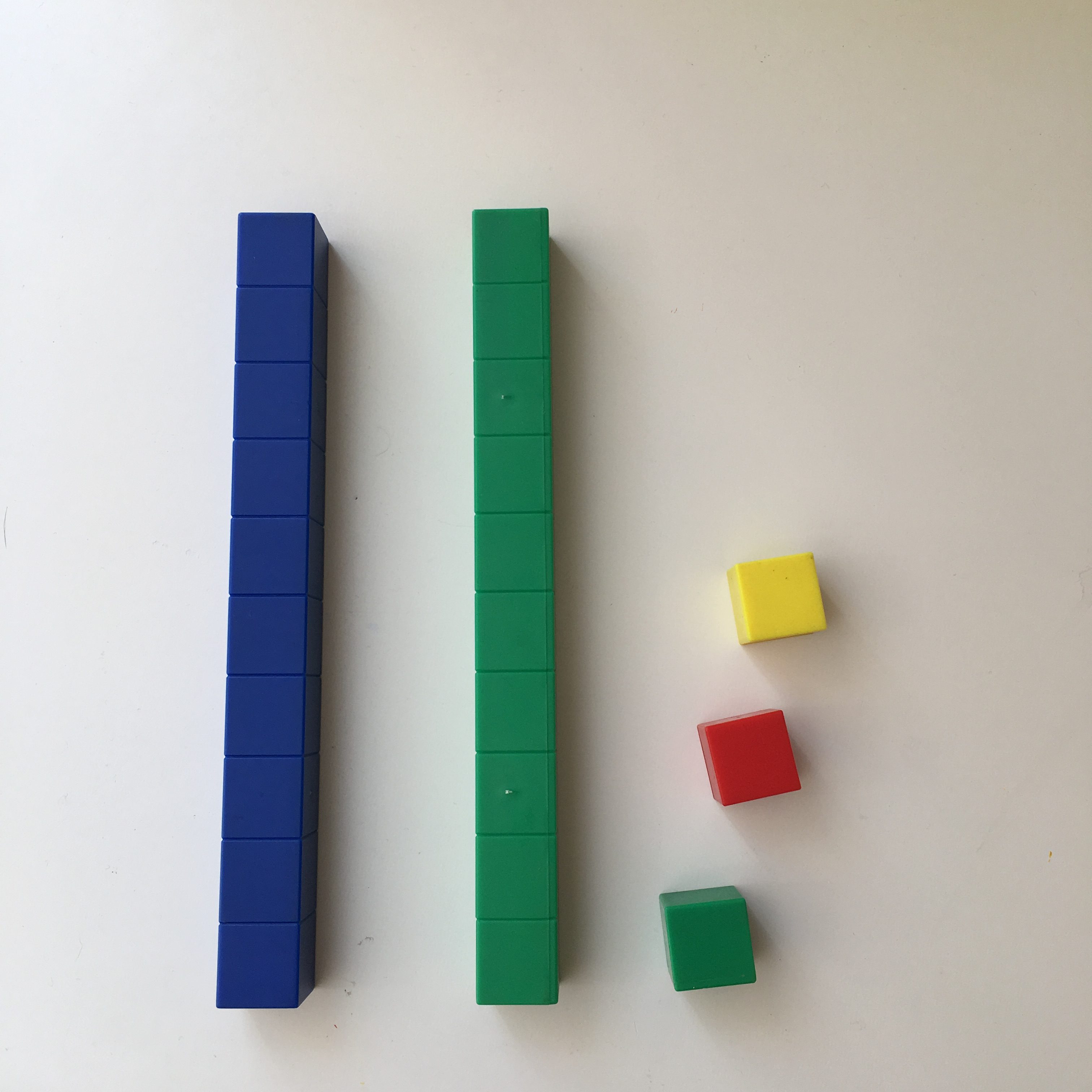

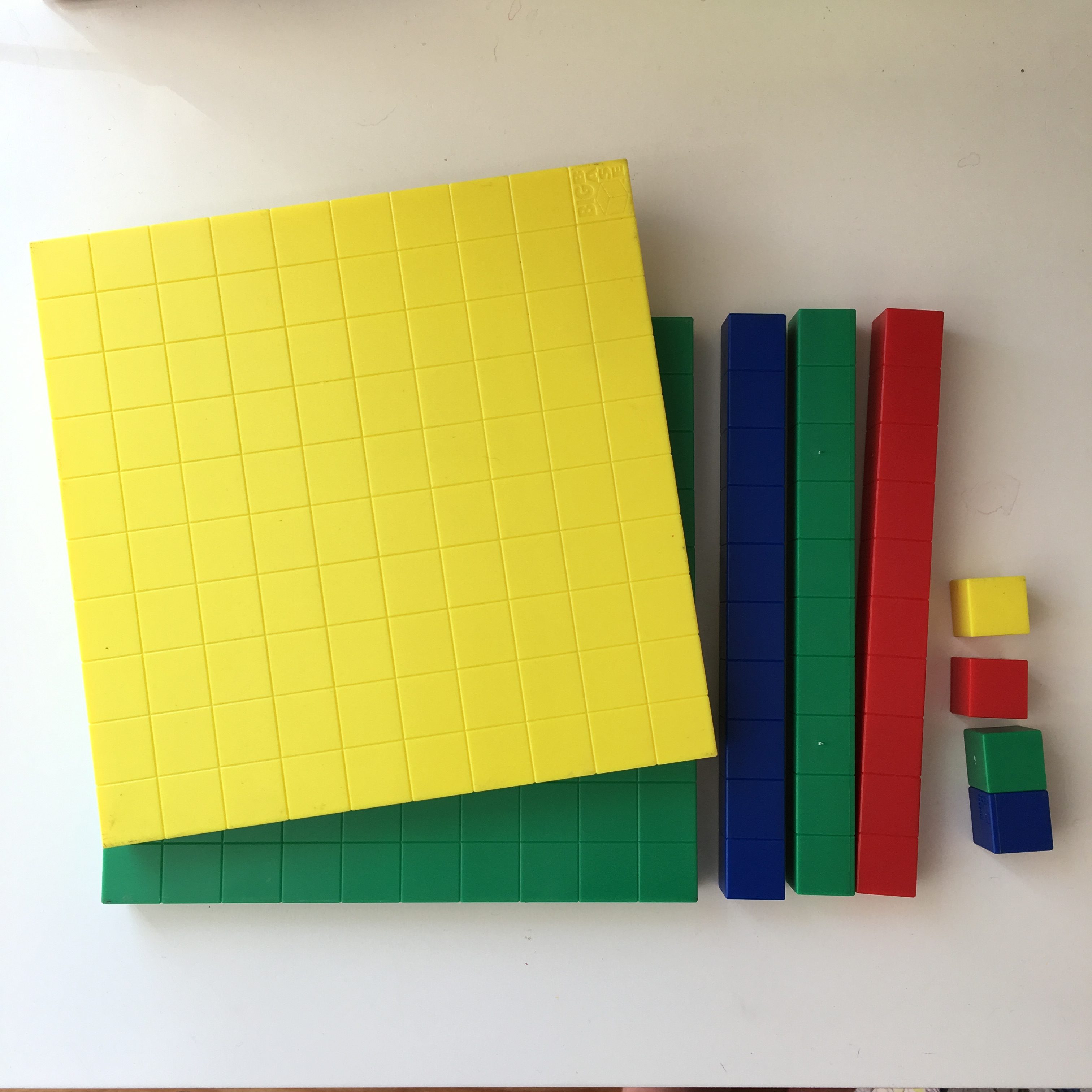
I’m sure you got them all correct but if you want to check… the first is 23 (2 tens and 3 ones) the second is 134 (1 hundred, 3 tens and 4 ones) and the lst is 234 (2 hundreds, 3 tens and 4 ones.)
If you are keen to help at home you might not want to buy any specific resources but using grids/ drawing tables like at the top of the blog can be helpful to show your child which column the numbers go in. You can use small objects at home to count groups of tens and then extras as ones. Money is a great way to show place value; seeing that 10p is 10 x 1p and that £1 is 100 x 1p is a really good learning point for children.
Place Value Book!
If you would like to buy something to help with Place Value at home we recommend this book. It’s sort of a story and it’s funny! It helps to show place value through some funny monkeys making a cake! There are large numbers in it but children from year 2 onwards should love it (or earlier if you like exposing them to big ideas.) Books about maths are a great way to get conversations started and might be different to the maths they see at school.
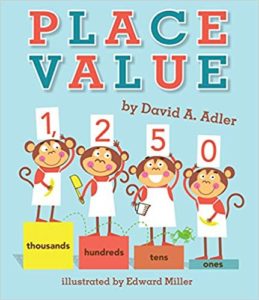
We hope this has helped to explain a bit about place value and how your child will learn at school. We will be posting more ideas for practising at home on Istagram (all vids etc in highlights,) facebook and pinterest. If you have any questions or if you would like a printable place value grid just drop us a message here or email us. Please tell us the age of your child so we can make sure the grid is suitable.
